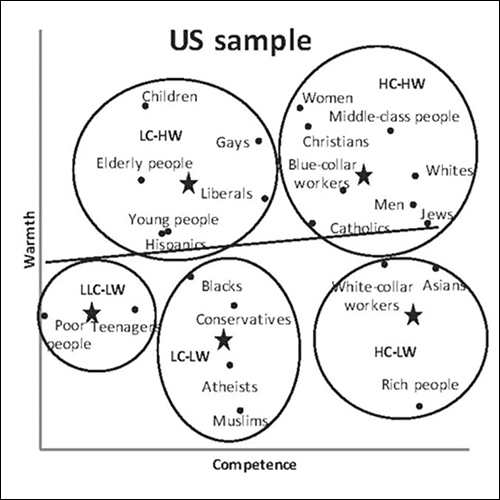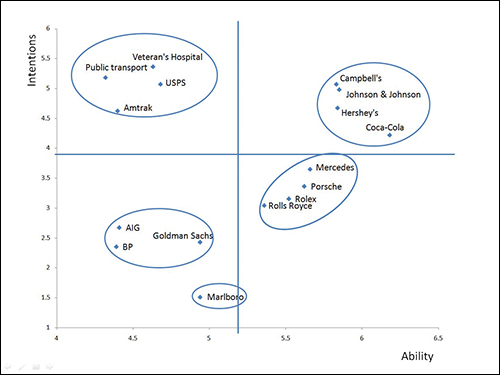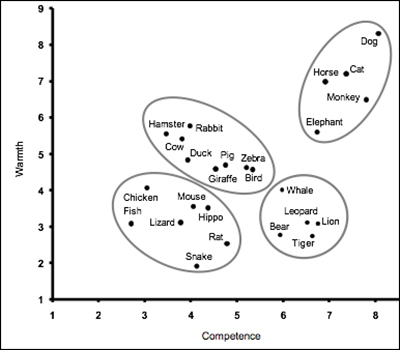Teaching Current Directions
Teaching Current Directions in Psychological Science
Aimed at integrating cutting-edge psychological science into the classroom, Teaching Current Directions in Psychological Science offers advice and how-to guidance about teaching a particular area of research or topic in psychological science that has been the focus of an article in the APS journal Current Directions in Psychological Science. Current Directions is a peer-reviewed bimonthly journal featuring reviews by leading experts covering all of scientific psychology and its applications and allowing readers to stay apprised of important developments across subfields beyond their areas of expertise. Its articles are written to be accessible to nonexperts, making them ideally suited for use in the classroom.
Visit the column for supplementary components, including classroom activities and demonstrations.
Visit David G. Myers at his blog “Talk Psych”. Similar to the APS Observer column, the mission of his blog is to provide weekly updates on psychological science. Myers and DeWall also coauthor a suite of introductory psychology textbooks, including Psychology (11th Ed.), Exploring Psychology (10th Ed.), and Psychology in Everyday Life (4th Ed.).
Reflecting on 5 Years of Teaching Current Directions
Teaching Students Why Warmth and Competence Matter
Reflecting on 5 Years of
Teaching Current Directions
By C. Nathan DeWall and David G. Myers
Teaching Current Directions brings cutting-edge psychological science into the classroom. In January 2018, we celebrated 5 years of using the column to share our passion for teaching psychological science. Its mission endures, but the contents and contributors have evolved. Here we share the column’s history, our reflections on its first 5 years, and our goals for its future.
Teaching Current Directions can be traced to a November 20, 2002, email from APS Executive Director Emeritus Alan Kraut to David Myers. Current Directions in Psychological Science was flourishing, and Kraut wondered whether Myers might help him with a pet project. “What we haven’t done is make the more direct connection between the journal and teaching,” Kraut said. “I always thought that what was missing was a section in each issue on how certain articles in that issue might be used in the classroom.” A few emails fluttered between Kraut and Myers in the ensuing year. Nothing solidified and the case went cold.
In 2012, two unrelated events led to the birth of Teaching Current Directions. First, Myers recruited Nathan DeWall as successor coauthor on his Introduction to Psychology textbook series. Second, Kraut cleaned out his email inbox, leading him again to invite Myers to write a teaching column that featured Current Directions articles. Now working as a duo, Myers and DeWall enthusiastically agreed to select, summarize, and showcase Current Directions articles in the APS Observer, describing how instructors could bring the science into the classroom through engaging activities. Apart from the convention issue, Teaching Current Directions now appears in each issue of the magazine.
We spent the first few months trying to establish the column’s mission, vision, and values, which include writing essays that highlight new psychological science insights for all Observer readers. With support from the Current Directions authors whose work we feature — and whom we invite to fact check and comment on our essays — those early columns covered topics such as desire, happiness, morality, and residential mobility. As we hit our stride, we began to receive feedback from other instructors who had read the column. To our surprise, more and more people were reading the column and using the activities in their classrooms. Even people with reduced teaching loads, who might not have been getting the opportunity to use the activities we described, told us they read the column every time they received the Observer. We had hit a nerve.
The column wasn’t free of weaknesses. We struggled to cover topics outside of social psychology, our shared area of expertise. To fill this gap, we recruited two talented cognitive psychologists, APS Fellows Cindi May (College of Charleston) and Gil Einstein (Furman University), who began contributing several coauthored columns each year beginning in 2016. Their expertise and creativity helped add breadth and depth to the topics covered, which increased the column’s impact.
Psychological science embraces and celebrates all forms of diversity. To ensure that the column did its due diligence in addressing issues of cultural diversity, we called upon the accomplished cultural psychologist Beth Morling as a contributing columnist in 2018. Morling’s research methods, textbook authorship, and multifaceted experimental and teaching experience enable her to add a unique cultural perspective to the column.
The future of Teaching Current Directions is bright. Mariko Hewer and Kimberly Armstrong at APS continue to provide excellent editorial and technical support. This includes establishing an electronic database of all Teaching Current Directions columns. We hope to engage readers further by creating an interactive online feature in which instructors can share their experiences using the activities included in each column. Although both of us plan to continue contributing columns, we also hope to approach other talented teacher–writers who can aid our mission of bringing cutting-edge psychological science into the classroom.
The first 5 years of Teaching Current Directions have taught us that people are hungry to learn about psychological science and how to share its insights with others. Whether in a classroom, a conference presentation, or an informal hallway chat, people are eager to teach others how to better understand themselves, their fellows, and their global community. We look forward to touching base with you again in 5 years.
Teaching Students Why
Warmth and Competence Matter
By Beth Morling
What do dogs, Hershey’s chocolate, and middle-class people have in common? What about rats, Goldman Sachs, and teenagers?
Despite their disparate categories, each triad has a similar “feel” to it. I would guess you feel pretty good about the first triad, but a bit icky about the second.
Now consider this triad: hamsters, the United States Postal Service, and the disabled. Do you feel ambivalent about these seemingly pitiful groups?
Emotional responses to social categories such as these are predictable from the Stereotype Content Model (SCM; Fiske, Cuddy, Glick, & Xu, 2002). Social psychologists have long studied processes of stereotyping; the SCM documents stereotype content. According to this model, group stereotypes are organized along two big dimensions:
Warmth addresses a group’s intent: Are they sociable, trustworthy, and cooperative, or cool, untrustworthy, and competitive?
Competence addresses a group’s capability and effectiveness: Can they act on that intent, or can a person safely ignore them because they present no threat?
The SCM argues that warmth and competence dimensions convey evolutionarily functional information.
Stereotype content research captures what “everybody knows” about the groups in their community. People’s ratings populate four quadrants of a two-dimensional space, with in-groups (e.g., Christians, Whites) rated as both warm and competent and out-groups (e.g., drug addicts, teenagers) seen as neither. There are also two ambivalent quadrants. Some groups are perceived to be competent but cold (e.g., rich people, professionals); others are incompetent but warm (e.g., the elderly, disabled).
Exposing undergraduates to the SCM introduces key psychological constructs such as stereotyping, ambivalence, and evolutionary reasoning, as well as the quantitative concept of dimensional space. Here’s a way to make the theory come alive in your classroom.
First, work with your class to create a big list of groups in the local campus community. List them on the board while a volunteer writes each on its own sticky note. Come prepared to seed the list with groups from each quadrant, such as engineering majors, middle-class students, landlords, professors, honors students, custodial staff, LGBTQ individuals, Lambda Chi Alpha members, and so on.
Next, put students in teams and give each a handful of the group-labeled sticky notes. Teams should decide, for each group they received:
- As viewed by people on campus, how competent and efficient are members of this group?
1 2 3 4 5 6 7
Not at all Extremely
- As viewed by people on campus, how friendly and trustworthy are members of this group?
1 2 3 4 5 6 7
Not at all Extremely
Announce that you are not interested in students’ personal beliefs, but in how each group is viewed by others. As teams decide their ratings, prepare the chalkboard with two axes: competence (horizontal) and warmth (vertical). Teams will come up and affix each Post-it note to this two-dimensional space.
Subsequent questions should first address how the two dimensions have practical utility. Warmth answers the evolutionarily important question, “Are they friend or foe?” Competence answers the equally important “How effective are they?” Human social cognition that focused on these two questions probably assisted survival in the distant past.
Second, discuss the four quadrants. Researchers use cluster analyses to quantify the similarities, but your class map probably includes some “in-groups” (perhaps middle-class students) who are high in both competence and warmth. Look for a low–low quadrant (perhaps local homeless people). Check for off-diagonal, ambivalent quadrants: Groups considered warm but incompetent (football players, perhaps?) or competent but cold (maybe Asian international students?). Explain the concept of ambivalence and how SCM’s two dimensions predict these mixed stereotypes.
Third, reflect on how your map of campus subgroups compares with research findings. Fiske’s lab website provides maps of stereotypes around the world. Display your country’s data, such as this one from the United States:

Figure, used with permission, drawn from data in Kervyn, Fiske, & Yzerbyt (2015). Circles in all figures indicate the results of statistical cluster analyses. HC = high competence; HW = high warmth; LC = low competence; LW = low warmth
At this point, some students may take offense at what they see. Now’s the time to remind them that normative stereotypes — conventional wisdom — are not personal beliefs. In fact, even members of stigmatized groups can reliably report what others think of their own category. To lighten the mood, show how US brands and animal subgroups adhere to the warmth/competence space. Finally, describe the emotions that are reliably associated with each quadrant. Typically, people feel admiration for groups in the top right and disgust or contempt for those in the lower left. Ambivalent emotions go with ambivalent quadrants, with pity in the top left and envy in the bottom right.

Source: Kervyn, Fiske, & Malone, 2012. Figure originally published in Journal of Consumer Psychology

Source: Sevillano & Fiske, 2016. Figure originally published in Journal of Applied Social Psychology
Discussion questions can deepen students’ engagement. For example, you can note, “Stereotypes about these groups are just superficial images. If nobody personally believes them, do they matter?” You can also ask, “Can current events or public campaigns change people’s perceptions of stereotype content?”
The SCM strengthens our understanding of social cognition by showing how the content of our stereotypes reflects the essential questions we ask about others.
References
Fiske, S. T., Cuddy, A. J. C., Glick, P., & Xu, J. (2002). A model of (often mixed) stereotype content: Competence and warmth respectively follow from perceived status and competition. Journal of Personality and Social Psychology, 82, 878–902.
Kervyn, N., Fiske, S. T., & Malone, C. (2012). Brands as intentional agents framework: How perceived intentions and ability can map brand perception. Journal of Consumer Psychology, 22, 166–176.
Kervyn, N., Fiske, S. T., & Yzerbyt, Y. (2015). Forecasting the primary dimension of social cognition: Symbolic and realistic threats together predict warmth in the stereotype content model. Social Psychology, 46, 36–45.
Sevillano, V., & Fiske, S. T. (2016). Warmth and competence in animals. Journal of Applied Social Psychology, 46, 276–293.





APS regularly opens certain online articles for discussion on our website. Effective February 2021, you must be a logged-in APS member to post comments. By posting a comment, you agree to our Community Guidelines and the display of your profile information, including your name and affiliation. Any opinions, findings, conclusions, or recommendations present in article comments are those of the writers and do not necessarily reflect the views of APS or the article’s author. For more information, please see our Community Guidelines.
Please login with your APS account to comment.